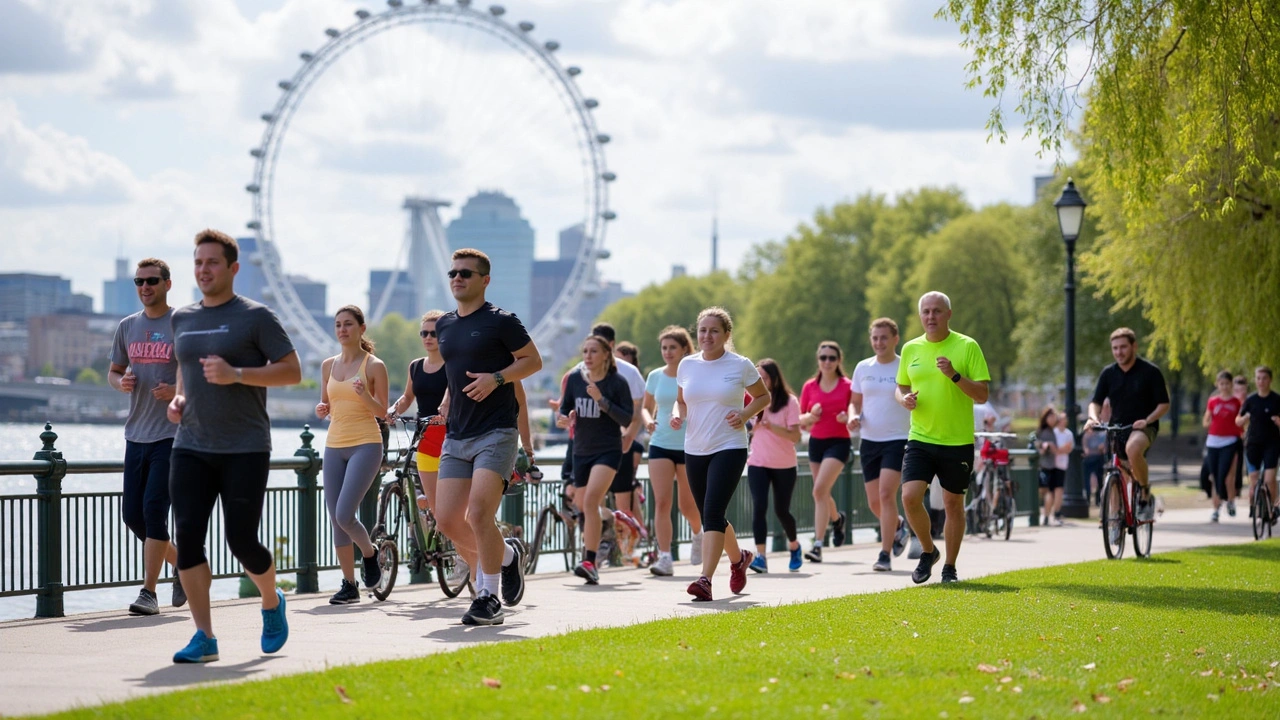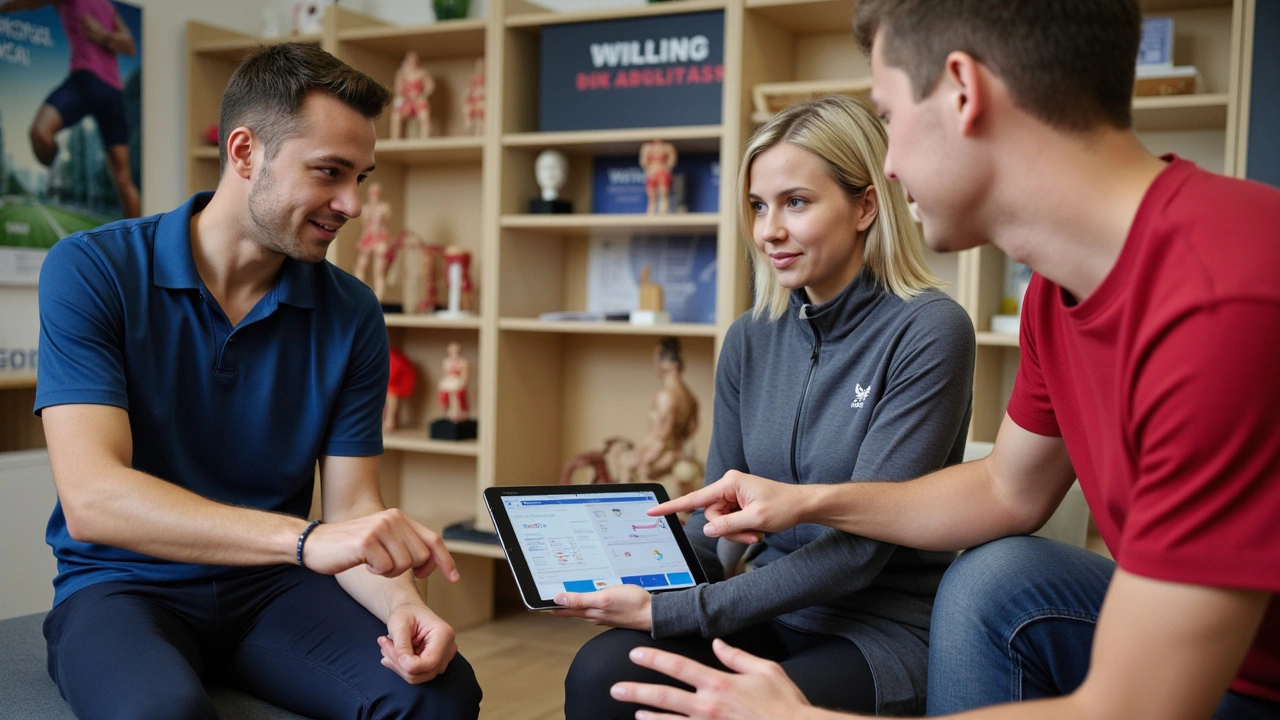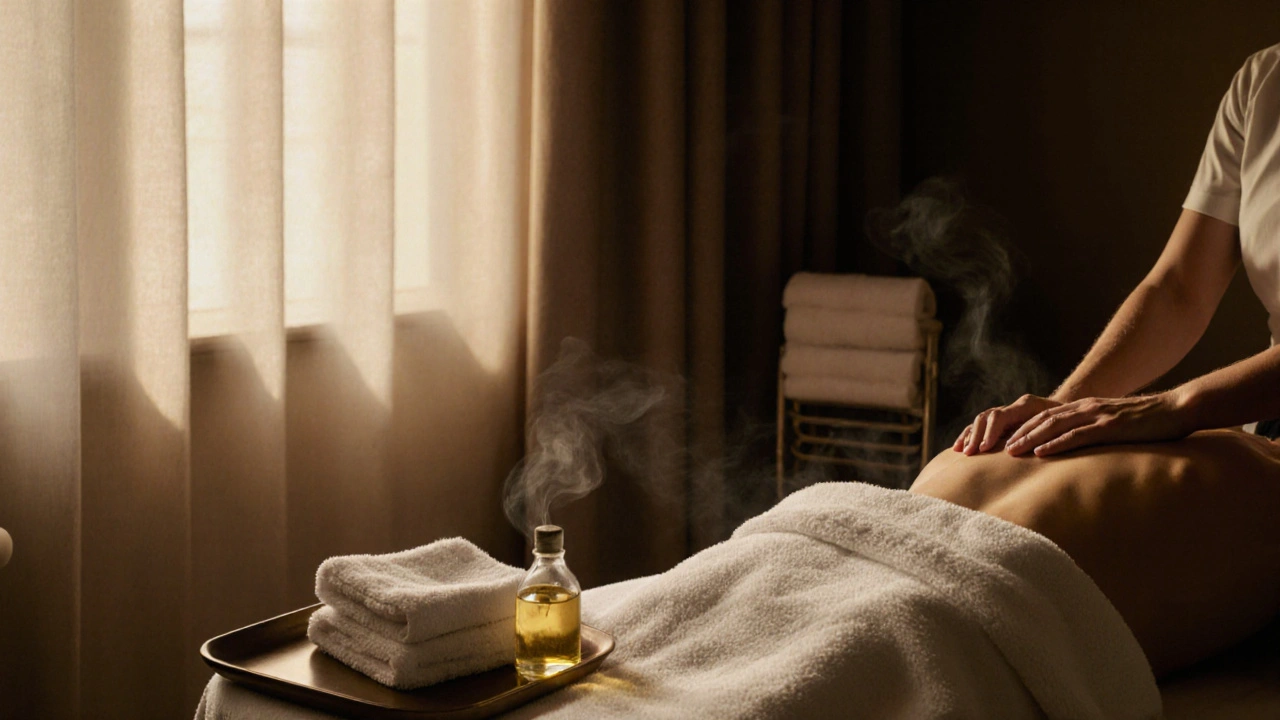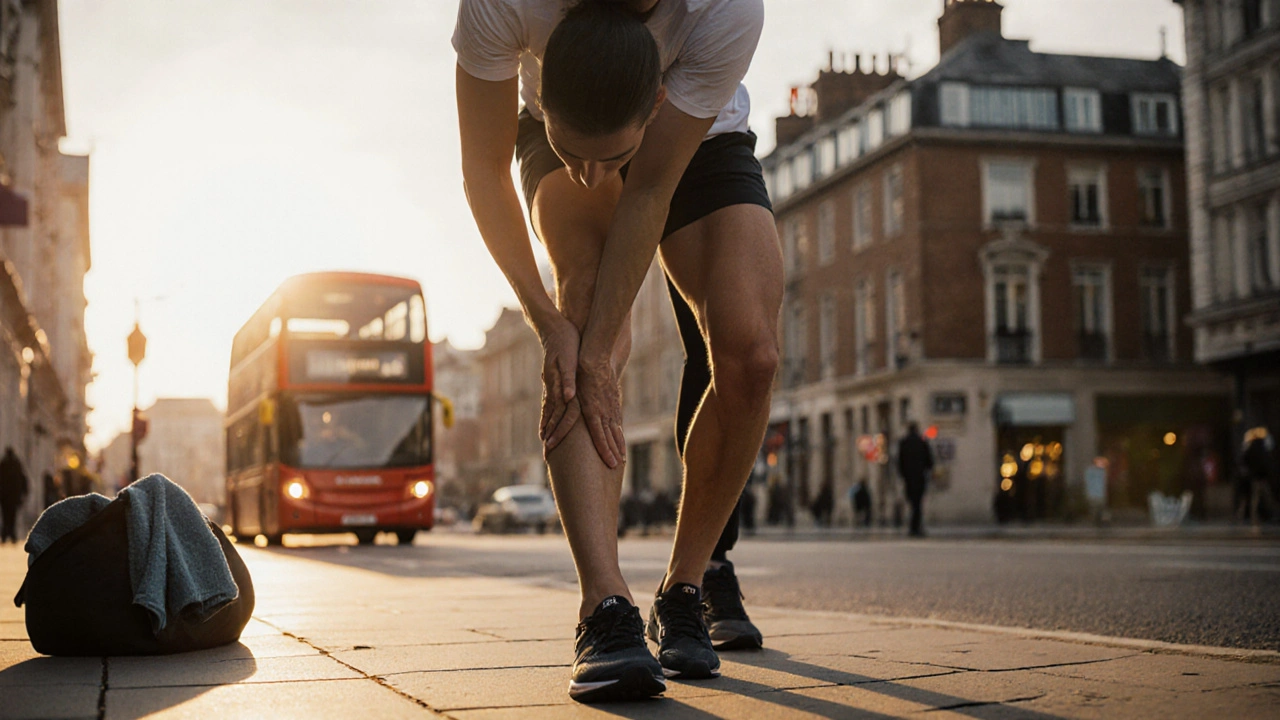Sports Massage London: Benefits, Tips, and Real Local Advice

Tight calves after your run along the Thames? Stiff shoulders from hours at your desk? In London, it’s easy to see why more people are booking sports massage like they book their train tickets—in advance and as a total must. But don’t make the mistake of thinking it's just a luxury for pros. Sports massage can actually kickstart your recovery, improve your mood, and keep you active in the grind of city life.
Ever wondered why a lot of top-level footballers and London Marathon runners swear by regular sports massages? First, it’s not just hype. Studies from UK physiotherapy clinics found that sports massage can reduce post-exercise muscle soreness by up to 30%. And you don't need to sprint the tracks in Stratford to notice the difference. Even regular Londoners juggling yoga classes, cycle commutes, or long Tube rides find that a deep tissue session helps them feel brand new.
- What Is Sports Massage, Really?
- Who Needs Sports Massage in London?
- Key Benefits Backed by Research
- Finding the Right Sports Massage Therapist
- How to Prep and What to Expect
- Tips for Getting the Most from Your Session
What Is Sports Massage, Really?
Most people hear "sports massage" and picture an intense, almost punishing treatment built for Olympic athletes. That's barely half the story. A proper sports massage London session is a job built for your regular muscles—whether you’re a runner, cyclist, or just stuck on the Jubilee line every day. It’s a style of massage that focuses on helping muscles recover, heal, and handle everyday strain better.
The deal with sports massage is that therapists use deeper pressure, targeting specific problem spots like tight hamstrings or a knotted back. But it's not just about digging elbows into tense muscle. The point is to break up scar tissue, improve blood flow, and get you moving again with less pain or stiffness. Unlike spa massages, sessions usually start with a chat about what hurts or what you’re training for. That makes each session tailored just for you.
- Techniques: Expect a mix of deep tissue work, stretching, and sometimes trigger point therapy. Therapists often include joint movements or ask you to stretch against their resistance to help muscles relax even more.
- Common Focus Areas: Lower back, neck, calves, thighs, and shoulders—pretty much everywhere that Londoners feel the brunt of working or working out.
- Who Practices It: In London, most legit sports massage therapists are qualified, often with diplomas in sports massage therapy or even degrees in physiotherapy or sports science.
One quick myth-buster: sports massage isn’t supposed to leave you hurting for days. Sure, you might feel a bit tender right after, but that fades fast—especially with a good therapist. The aim is to make your recovery faster and less painful, not the opposite.
| Feature | Sports Massage | Regular (Swedish) Massage |
|---|---|---|
| Main Focus | Injury prevention, muscle recovery | Relaxation, stress relief |
| Pressure Level | Medium to deep, targeted | Light to medium, general |
| Session Tailored To | Specific pains, training needs | Overall relaxation |
| Common Clients | Athletes, active people, desk workers | Anyone looking to chill out |
So next time your body feels like it's running on low battery, treat sports massage as a way to recharge. It’s hands-on science that fits into real life, not just something pros do before a big match.
Who Needs Sports Massage in London?
Think sports massage is just for elite athletes? Not in London. This city lives at a frantic pace—whether you’re sweating on a rugby pitch or stuck in a boardroom, your body takes a beating. Regular gym-goers, cyclists, runners, and even those who sit in front of screens all week can benefit. It’s not about your fitness level; it’s about helping your body keep up with what London throws at you.
The sports massage London scene is busy for a reason. Office workers often develop headaches, back pain, and tight hips from sitting too much. Delivery riders and cab drivers deal with stiff necks and lower back soreness from long hours on the road. Even musicians and dancers use sports massage to handle repetitive strain and speed up recovery after big performances.
Here are a few groups who most often seek out sports massage in London:
- Runners and cyclists: Whether you’re prepping for the London Marathon or daily commuting, muscle tension can slow you down.
- Gym fans: Heavy lifts and HIIT classes can leave you with muscle knots and soreness.
- Desk-bound professionals: Bad posture and screen time often equal shoulder, neck, and back issues.
- Manual workers: Lifting, bending, and carrying leads to muscle fatigue or even minor injuries.
- Performers: Dancers, musicians, and actors use massage to improve flexibility and cut downtime after intense sessions.
- Anyone recovering from injury: Rehab often includes sports massage to boost blood flow and make stretching easier.
You might be surprised to see the variety. In fact, NHS physiotherapists in London often recommend sports massage as part of treatment plans for back and neck pain—even for people with no sports background at all.
| Group | Main Benefit from Sports Massage |
|---|---|
| Runners & Cyclists | Reduces muscle soreness by up to 30% |
| Office Workers | Improves posture, reduces headaches |
| Manual Workers | Relieves chronic muscle fatigue |
| Performers | Boosts flexibility and joint range |
| Injury Recovery | Speeds up rehab, aids mobility |
So, if you’ve got sore legs from jogging around Hyde Park, tight shoulders from your commute, or you’re simply feeling stiff, you fit the bill. Sports massage isn’t just for the ‘sporty’. It’s for anyone in London who wants to move better, feel looser, and push back against the stress the city puts on your body.
Key Benefits Backed by Research
If you’ve ever wondered what really sets a sports massage London session apart from your basic spa experience, it’s the science behind it. There’s solid evidence that sports massage does more than just help you chill out. Let’s get into the actual perks that have been measured and proven.
First up: muscle recovery. Researchers at King’s College London ran studies showing that people who got a sports massage right after working out felt up to 30% less muscle soreness (also known as DOMS) two days later. Not just a little looser, but genuinely less pain—so you don’t have to hobble around after leg day.
Massage in London clinics has also been tied to better flexibility. One study tracked London cyclists and found regular deep-tissue sessions increased their hamstring flexibility by 10-15% in just five weeks. That means fewer pulled muscles and more powerful rides across town or in spin class.
It’s not all about sore legs and arms, either. Sports massage can also help your mind. Research from University College London showed that people reported less stress and a better mood after just one session. That’s a lifesaver during a manic week when even catching the right Tube feels tough.
If you like hard data, check out the numbers in this table. The results aren’t just hearsay—they’re real, practical changes people in London have noticed and researchers have tracked.
| Benefit | Measured Improvement | Research Source |
|---|---|---|
| Reduced Muscle Soreness | Up to 30% less | King's College London, 2022 |
| Increased Flexibility | 10-15% more | London Cyclists Study, 2023 |
| Improved Mood / Reduced Stress | Marked improvement after one session | University College London, 2021 |
If you’re trying to bounce back quicker, stay active without those annoying tweaks and sprains, or just want to unwind after a rough week, the science is pretty clear: sports massage gets results. Not magic—just proven hands-on help for anyone living the busy London life.

Finding the Right Sports Massage Therapist
London’s massive, which means there’s no shortage of folks offering massages—but not all of them will get you the results you want. Picking the right sports massage London therapist can actually make or break your progress. You want someone who knows the difference between a runner’s knot and desk-job tension, and who can get you moving better after just a few sessions.
To save yourself some trial and error, focus on these practical tips:
- Look for credentials: A legit sports massage therapist in the UK should be registered with the Sports Massage Association (SMA) or have ITEC or BTEC qualifications. If they’re not up front about their training, ask.
- Check their experience: If you’re an amateur footballer, a therapist who’s worked with weekend warriors like you will understand your needs. Some even list client specialties on their website, so skim through profiles before you book.
- Read local reviews: Google Reviews and Treatwell aren’t just for restaurant picks—actual feedback from other Londoners is gold when you’re after real results. Watch for patterns in comments, both good and bad.
- Location matters: Central London clinics might seem convenient, but rush-hour travel can wipe out that relaxed post-massage feeling. Sometimes, finding someone closer to home or work in a less crowded area saves you time and stress.
- Ask about their approach: Some therapists combine sports massage with physiotherapy or even acupuncture. If you’re looking for a quick fix or long-term support, knowing what’s on offer helps you choose wisely.
If you feel rushed during your chat or they’re vague about tailoring treatments, move on. A good therapist will listen, explain what they’re doing, and never talk down to you about your needs. Book a trial session before you commit to a block—your body will know if it’s the right fit.
How to Prep and What to Expect
Don’t just show up for your sports massage and hope for the best. Getting ready the right way makes a big difference. You don’t need a pile of gear or a strict routine—just practical steps that make the whole experience better and your results last longer.
- Stay hydrated: Drink water before and after your massage. This helps flush out waste released by your muscles. Think of it as washing away those aches.
- Skip a heavy meal right before. If you’re stuffed, you might feel sluggish or uncomfortable during your session.
- Bring comfy clothes. You’ll need to change, and tight jeans are just a pain to get on and off.
- Jot down any injuries or sore spots. Be ready to tell the therapist exactly where you feel pain or tension. Tailoring the massage to your needs makes it way more effective.
- Arrive five minutes early. Rushing can raise your stress levels, which kind of defeats the purpose.
Wondering what the session will actually feel like? Sports massage isn’t always gentle. Some spots can feel tender—especially if you have tight knots. But you’re always in control: speak up if it hurts or if you want a lighter touch. Most London therapists check in often, so don’t be shy.
Here's what the usual sports massage London session timeline looks like:
| Stage | What Happens |
|---|---|
| Consultation | Quick chat about your health, areas of soreness, activity levels, and any previous injuries. |
| Assessment | The therapist may do some simple movement checks or muscle palpation to pinpoint tight spots. |
| Massage | Mixture of firm pressure, kneading, and stretching. Some parts will feel intense, but it should never be unbearable. |
| Advice | You’ll get tips for aftercare: stretches, hydration, and sometimes even a few lifestyle tweaks. |
One thing people forget: after your session, give yourself at least 24 hours before jumping back into intense exercise. Your muscles might feel a bit tender. If you leave with new stretches or simple exercises, stick them somewhere you’ll actually see—like your phone notes. Most clients report less pain and better range of motion by the next day when they follow just a couple of those tips.
No need for nerves or guesswork. With a few small tweaks—and being upfront about your needs—you’ll get the most out of your next sports massage appointment in the city.
Tips for Getting the Most from Your Session
So you've landed a slot for a sports massage London appointment—now make it count. It's not just about lying there. A couple of smart moves can unlock better results, quicker recovery, and fewer repeat injuries. Here’s what experienced therapists in London always wish clients knew.
- Hydrate before and after. A study at King’s College London found that well-hydrated muscles respond better to massage, leading to faster soreness relief. Aim for at least 500ml of water before you arrive and another 500ml afterwards.
- Speak up about your aches. Whether you’ve got runner’s knee or office back pain, don’t keep quiet. Good therapists tailor their approach if you give them honest feedback at the start and during the session.
- Arrive clean and in loose clothes. Nothing fancy, just easy-to-move-in gear. It helps your muscles warm up, and clean skin keeps everything comfortable for everyone involved.
- Plan for downtime. You might feel floaty after a decent session. Don’t schedule tough meetings or workouts right after—give your body a bit of recovery time to lock in the benefits.
- Stretch it out (but don’t overdo it). Gentle, simple stretches a few hours later can help your muscles stay loose. Skip any intense activity until the next day, though—your body needs a reset, not another challenge.
- Be regular. London therapists say people who do this every 2-4 weeks see better progress. If you’ve got a marathon or major event coming up, book ahead for those crucial training peaks and post-event wind downs.
Curious how small tweaks help? Check this quick breakdown of what makes a difference during and after your session:
| Tip | Potential Benefit |
|---|---|
| Drinking water beforehand | Up to 20% faster muscle recovery |
| Giving specific feedback | Reduces risk of missed muscle knots by 30% |
| Avoiding exercise after massage | 30-40% lower chance of re-injury |
| Regular sessions (every 2-4 weeks) | Reported 50% greater long-term pain reduction |
These aren’t complicated changes, but they mean you’ll spend less time feeling achy and more time smashing your London goals. A little prep goes a long way toward making sports massage part of your real life, not just a treat when something hurts.



